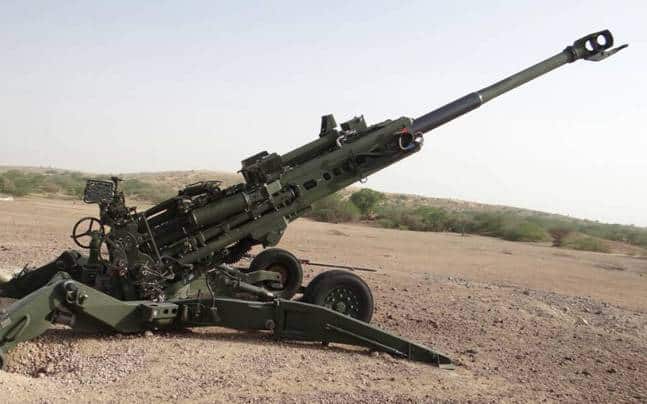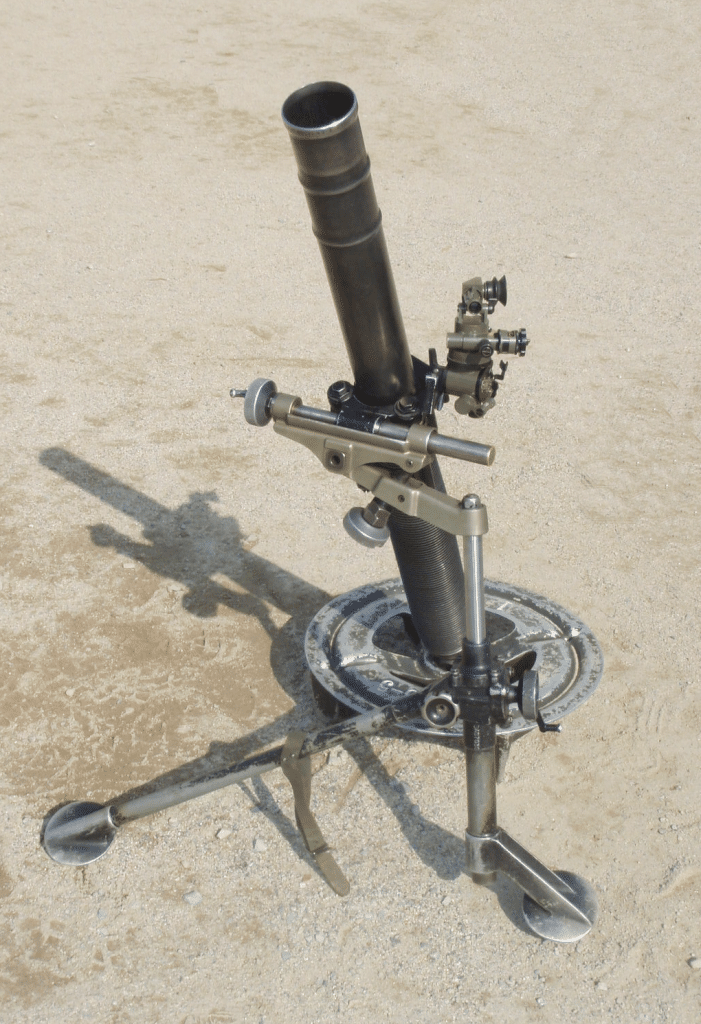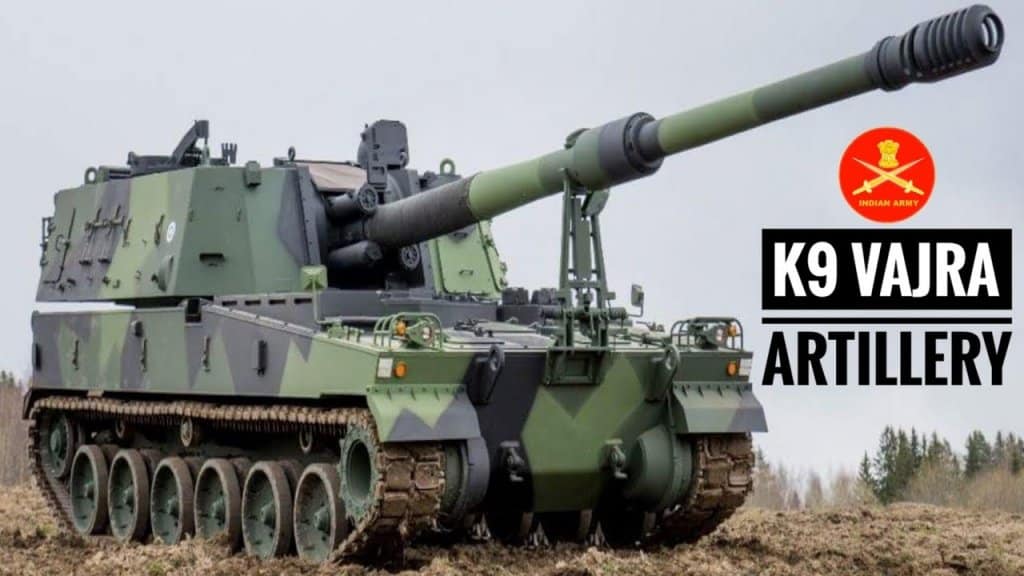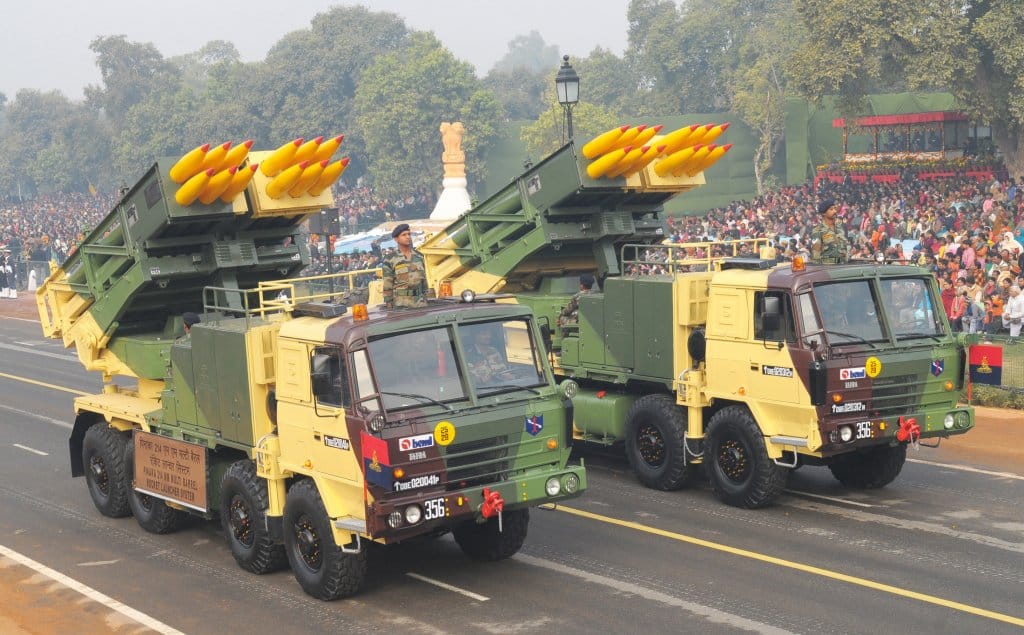In this article, You will read about Artillery Gun system of India for UPSC (Defense Technology).
Artillery Guns are utilized to upgrade the operational abilities of the Infantry Units. They give spread and backing to them in battle situations. Their long-extend and enormous capability help to devastate the foe without any problem. The Artillery Guns was a distinct advantage for the Indian Armed Forces during the Kargil Operations.
Artillery Gun system of India
Artillery refers to the large caliber guns used in modern warfare on land.
Artillery Guns are divide into 3 Major Parts
- Field Artillery (Howitzer or Towed artillery)
- Mortars Artillery
- Self-Propelled Artillery
Field Artillery Gun
They are smaller guns that could be easily moved and can accompany the field army on the march. Its position can also be changed on the battlefield with the changing circumstances.
6 types of Field Artillery Gun used by Indian army-
- 105 MM Indian Field Gun
- 105 MM Light Field Gun
- 122 MM D-30 Howitzer
- 130 MM M-46 Field Gun
- 155 MM Metamorphosis Gun
- 155 MM Haubits FH77
Howitzer: It is characterized by a relatively short barrel length. Small propellant charges are used to propel projectiles at high trajectories, thus giving them a steep angle of descent. Some howitzer types of equipment used in the Indian army regiment are M777, Haubits FH77/B, M46, Metamorphosis 155vmm gun, M101 howitzer. Howitzer comes from the word ‘HOUFE’ meaning heap or mass. Thus, the howitzer type is used against mass enemies.

Mortars Artillery
A mortar is usually a simple, lightweight, man-portable, muzzle-loading weapon, consisting of a smooth-bore metal tube fixed to a base plate (to absorb recoil) with a lightweight bipod mount. They launch explosive shells in high-arcing ballistic trajectories. Mortars are typically used as an indirect fire weapon for close fire support with a variety of ammunition.
types of Mortars used by Indian army-
- OFB E1 51mm
- OFB E1 81mm
- OFB E1 120mm
- L16 81mm mortar

Self-Propelled Artillery
Self-propelled artillery (also called mobile artillery or locomotive artillery) is artillery equipped with its own propulsion system to move towards its target. Within the term are covered self-propelled guns (or howitzers) and rocket artillery. They are high mobility vehicles, usually based on continuous tracks carrying either a large howitzer, field gun, a mortar, or some form of rocket or missile launcher. They are usually used for long-range indirect bombardment support on the battlefield.
Types of Self Propelled Artillery –
- FV433 Abbot SPG
- 2S1 Gvozdika
- M-46 Catapult
- K9 Vajra-T

Multiple Rocket Launchers: It is a type of unguided rocket launching system. Some MRL presently in the Indian Army Artillery Regiment are: Smerch 9K58 MBRL, Pinaka MBRL, and BM21. Although the MRLs are much less accurate and have low rate of fire, but they have the ability of dropping many hundreds of kilograms of explosives over an enemy with devastating effects.
Dhanush Artillery Gun
- Dhanush is the first indigenous artillery gun with a caliber of 155mm x 45mm. It is the first long-range artillery gun to be produced in India, having a range of 38 km, which is equipped with a navigation-based sighting system, on-board ballistic computation, and an advanced day and night direct firing system.
- It has been developed by Ordnance Factory Board (OFB), Kolkata based on requirements of the Indian Army and manufactured by Jabalpur-based Gun Carriage Factory (GCF) and 81 % of its components are indigenously sourced.
- It is also referred to as Desi Bofors because Bofors had played a crucial role in targeting Pakistani military positions during the 1999 Kargil War, and similarly has a 155 mm caliber.
- The gun has passed tests under severe cold conditions in Sikkim and Leh and in hot and humid weather in Balasore, Odisha, Babina in Jhansi, and in the desert of Pokhran in Rajasthan.
Sharang Artillery Gun
The Ordnance Factory Board (OFB) has handed over Sharang, the first 130mm M-46 artillery gun upgraded to 155mm to the Indian Army.
- Sharang is the 130mm artillery gun ‘up-gunned’ to 155mm, 45 caliber up-gunning based on the Army’s tender.
- The gun’s range has now gone from 27km to over 36km with the upgrade.
- It also has the more explosive capability and hence and more damage potential.
- This step will reduce the logistic trail of the Army as it does away with the need to carry 130mm shells and support equipment as the mainstay of the Army’s long-range artillery is 155mm guns.
K9 Vajra
- The K9 VAJRA-T 155mm/ 52 is a tracked self-propelled howitzer, which has its roots in the K9 Thunder, the mainstay of the South Korean Army.
- The Vajra offers a high rate of fire at a long-range and is compatible with Indian and standard NATO ammunition.
- The K9 Thunder platform is made of all-welded steel armour protection material.
- The K9 gun has been developed under the `Buy Global’ programme of the Defence Procurement Procedure (DPP) where foreign companies are allowed to participate —in this case Hanwha Techwin of South Korea is the technology partner of L&T.
- The first 10 K9 Vajra guns have been imported from South Korea and have been assembled by L&T in India. The balance 90 guns will be largely manufactured in the country.
M777
- The 155mm, 39 Calibre Ultra light Howitzers have been procured from the USA under Government to Government Foreign Military Sales in 2016 and will be assembled by U.S.A.’s BAE Systems in partnership with Mahindra Defence.
- It is one of the lightest guns that was actively used in Iraq and Afghanistan, the M777 will be deployed on the high altitude borders with China and Pakistan and is especially useful with the Chinook helicopters that can transport them quickly.
- It is smaller and lighter, as it is made of titanium and aluminum alloys and weighs just 4 tonnes. It has an effective firing range of 24 km.
- It has been procured through the Foreign Military Sales (FMS) route under the `Buy Global’ programme of the Defence Procurement Procedure (DPP).
Enhanced Version of Pinaka Mk-1
- The Enhanced Pinaka Mk-1 will eventually replace the Pinaka Mk-1 missiles, which are currently used by regiments of the Indian Army along India’s frontiers with China and Pakistan.
- While the Mark-1 has a range of 38 km, the enhanced version of Mark-1 has a range of 45 km and some key additional features.
- The latest test is in continuation of a number of missile trials conducted by the DRDO in the last two months.
- The test comes months after the Ministry of Defence (MoD) announced that its acquisition wing signed contracts with three Indian private companies for the supply of six regiments of Pinaka Rocket System, to be deployed along borders with Pakistan and China.
- The MoD had said that the induction would be completed by 2024. These six Pinaka Regiments would comprise 114 Launchers with Automated Gun Aiming and Positioning System (AGAPS), 45 command posts, and 330 vehicles.
Pinaka Missile
- Development: The development of the Pinaka multi-barrel rocket systems was started by the DRDO in the late 1980s, as an alternative to the Multi Barrel Rocket Launcher systems of Russian make called the ‘Grad’, which are still used by some regiments.
- After successful tests of Pinaka Mark-1 in late 1990, it was first used successfully on the battlefield during the 1999 Kargil War. Subsequently, multiple regiments of the system came up over the 2000s.
- Features:
- The Pinaka, a multi-barrel rocket launcher (MBRL) system named after Shiva’s bow, can fire a salvo of 12 rockets over a period of 44 seconds.
- One battery of the Pinaka system consists of six launch vehicles, accompanied by loader systems, radar, and links with network-based systems and a command post. One battery can neutralize an area of 1 km by 1 km.
- As a key tactic of long-range artillery battle, the launchers have to ‘shoot and scoot’ to ensure they themselves do not become the targets, especially being detectable due to its backblast.
- Multiple Variants: DRDO has also developed and successfully tested the Mk-II and guided variants of the Pinaka, which has a range of around 60 km, while the Guided Pinaka system has a range of 75 km and has integrated navigation, control, and guidance system to improve the end accuracy and enhance the range.
- The navigation system of the Guided Pinaka missile is also aided by the Indian Regional Navigation Satellite System (IRNSS).

Advanced Towed Artillery Gun System
- It is a 155mm, 52 caliber gun being developed by the DRDO.
- Indian Army has recently begun finalizing the Preliminary Specifications Qualitative Requirements (PSQR) for the gun system.
- The gun is currently weighing about 18 tonnes while the ideal weight is 14-15 tonnes.
- Significant features of the gun system – All-electric drive, high mobility, quick deployability, auxiliary power mode, advanced communications system, automated command, and control system.
Smart Anti-Airfield Weapon
- It is an indigenously developed lightweight glide bomb, capable of targeting large enemy infrastructure, like airfields.
- It was recently flight tested from Indian Air Force‘s Jaguar aircraft successfully.
- It is an accurate bomb and is termed a precision-guided munition (PGM).
- It has ―Inertial navigation system‖ which guides it precisely to its target, typically an enemy airfield up to 100 km away.
- This precisely guided one bomb is more economical than traditional free-fall bombs which are less accurate.
- It has another advantage that it can release the bomb at a safer distance to the enemy airfield and return without exposing itself to enemy anti-aircraft defenses.
Smerch Multiple Barrel Rocket Launchers
- It is designed to defeat soft and hard-skinned targets, artillery and missile systems.
- It features an automatic rocket preparing and launching system and a range of up to 90km.
- It was developed by Russia in the early 1980s and entered service with the Russian Army in 1988.
- In December 2005, India placed an order for an initial 38 systems and deliveries began in May 2007.
- A tender for mobility vehicles to carry this Smerch system and missiles developed by DRDO was opened by the Indian government earlier in 2015.
- For the first time, an Indian vehicle manufacturer (Ashok Leyland) has acquired the tender and it will deliver heavy-duty, high mobility vehicles for the above-stated purpose.

You have given great content here. I am glad to discover this post as I found lots of valuable data in your article. Thanks for sharing an article like this.<a href=”https://www.deshkeheroesin.com/top-6-indian-artillery-guns/“>indian field gun</a>
Great content . Thank you.